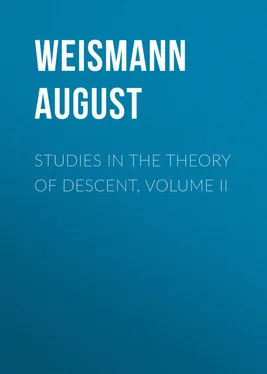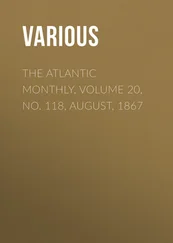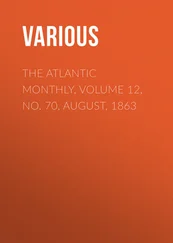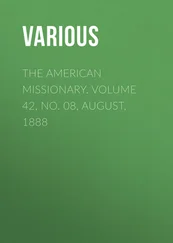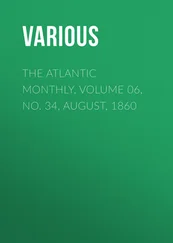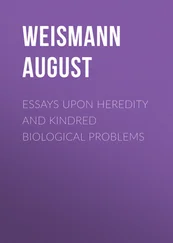August Weismann - Studies in the Theory of Descent, Volume II
Здесь есть возможность читать онлайн «August Weismann - Studies in the Theory of Descent, Volume II» — ознакомительный отрывок электронной книги совершенно бесплатно, а после прочтения отрывка купить полную версию. В некоторых случаях можно слушать аудио, скачать через торрент в формате fb2 и присутствует краткое содержание. Жанр: foreign_antique, foreign_prose, на английском языке. Описание произведения, (предисловие) а так же отзывы посетителей доступны на портале библиотеки ЛибКат.
- Название:Studies in the Theory of Descent, Volume II
- Автор:
- Жанр:
- Год:неизвестен
- ISBN:нет данных
- Рейтинг книги:4 / 5. Голосов: 1
-
Избранное:Добавить в избранное
- Отзывы:
-
Ваша оценка:
- 80
- 1
- 2
- 3
- 4
- 5
Studies in the Theory of Descent, Volume II: краткое содержание, описание и аннотация
Предлагаем к чтению аннотацию, описание, краткое содержание или предисловие (зависит от того, что написал сам автор книги «Studies in the Theory of Descent, Volume II»). Если вы не нашли необходимую информацию о книге — напишите в комментариях, мы постараемся отыскать её.
Studies in the Theory of Descent, Volume II — читать онлайн ознакомительный отрывок
Ниже представлен текст книги, разбитый по страницам. Система сохранения места последней прочитанной страницы, позволяет с удобством читать онлайн бесплатно книгу «Studies in the Theory of Descent, Volume II», без необходимости каждый раз заново искать на чём Вы остановились. Поставьте закладку, и сможете в любой момент перейти на страницу, на которой закончили чтение.
Интервал:
Закладка:
In this same family of the Sphingidæ cases are not wanting in which, on the other hand, the moths are far more closely allied than the larvæ. This is especially striking in the genus Deilephila , eight species of which are allied in the imaginal state in a remarkable degree, whilst the larvæ differ greatly from one another in colour, and to as great an extent in marking. These eight species are D. Nicæa , Euphorbiæ , Dahlii , Galii , Livornica , Lineata , Zygophylli , and Hippophaës . Of these, Nicæa , Euphorbiæ , Dahlii , Zygophylli , and Hippophaës are so much alike in their whole structure, in the form of the wings, and in marking, that few entomologists can correctly identify them off-hand without comparison. The larvæ of these four species, however, are of very different appearances. Those of Euphorbiæ and Dahlii are most alike, both being distinguished by the possession of a double row of large ring-spots. Zygophylli (see Fig. 50, Pl. VI Конец ознакомительного фрагмента. Текст предоставлен ООО «ЛитРес». Прочитайте эту книгу целиком, купив полную легальную версию на ЛитРес. Безопасно оплатить книгу можно банковской картой Visa, MasterCard, Maestro, со счета мобильного телефона, с платежного терминала, в салоне МТС или Связной, через PayPal, WebMoney, Яндекс.Деньги, QIWI Кошелек, бонусными картами или другим удобным Вам способом.
.) possesses only faint indications of ring-spots on a white subdorsal line; and in Hippophaës there is only an orange-red spot on the eleventh segment, the entire marking consisting of a subdorsal line on which, in some individuals, there are situated more or less developed ring-spots (see Figs. 59 and 60, Pl. VII Конец ознакомительного фрагмента. Текст предоставлен ООО «ЛитРес». Прочитайте эту книгу целиком, купив полную легальную версию на ЛитРес. Безопасно оплатить книгу можно банковской картой Visa, MasterCard, Maestro, со счета мобильного телефона, с платежного терминала, в салоне МТС или Связной, через PayPal, WebMoney, Яндекс.Деньги, QIWI Кошелек, бонусными картами или другим удобным Вам способом.
.). If we only compare the larvæ and imagines of D. Euphorbiæ and Hippophaës , we cannot but be struck with astonishment at the great difference of form-relationship in the two stages of development.
In the case of D. Euphorbiæ and Nicæa this difference is almost greater. Whilst these larvæ show great differences in colour, marking, and in the roughness or smoothness of the skin (compare Fig. 51, Pl. VI Конец ознакомительного фрагмента. Текст предоставлен ООО «ЛитРес». Прочитайте эту книгу целиком, купив полную легальную версию на ЛитРес. Безопасно оплатить книгу можно банковской картой Visa, MasterCard, Maestro, со счета мобильного телефона, с платежного терминала, в салоне МТС или Связной, через PayPal, WebMoney, Яндекс.Деньги, QIWI Кошелек, бонусными картами или другим удобным Вам способом.
. with Figs. 43 and 44, Pl. V Конец ознакомительного фрагмента. Текст предоставлен ООО «ЛитРес». Прочитайте эту книгу целиком, купив полную легальную версию на ЛитРес. Безопасно оплатить книгу можно банковской картой Visa, MasterCard, Maestro, со счета мобильного телефона, с платежного терминала, в салоне МТС или Связной, через PayPal, WebMoney, Яндекс.Деньги, QIWI Кошелек, бонусными картами или другим удобным Вам способом.
.), the moths cannot be distinguished with certainty. As has already been stated, the imago of the rare D. Nicæa is for this reason wanting in most collections; it cannot be detected whether a specimen is genuine, i. e. whether it may not perhaps be a somewhat large example of D. Euphorbiæ .
An especially striking instance of incongruence is offered by the two species of Chærocampa most common with us, viz., Elpenor and Porcellus , the large and small Elephant Hawk-moths. The larvæ are so similar, even in the smallest details of marking, that they could scarcely be identified with certainty were it not that one species ( Elpenor ) is considerably larger and possesses a less curved caudal horn than the other. The moths of these two species much resemble one another in their dull green and red colours, but differ in the arrangement of these colours, i. e. in marking, and also in the form of their wings, to such an extent that Porcellus has been referred to the genus Pergesa 23 23 Cat. Brit. Mus.
of Walker. If systemy, as is admitted on many sides, has only to indicate the morphological relationship, this author is not to blame – but in this case a special larval classification must likewise be admitted, in a manner somewhat similar to that at present adopted provisionally in text-books of zoology for the Hydroid Polypes and inferior Medusæ. This case of Porcellus , however, shows that those are correct who maintain that systemy claims to express, although incompletely, the blood-relationship, and that systematists have always unconsciously formed their groups as though they intended to express the genetic connection of the forms. Only on this supposition can it appear incorrect to us to thus separate two species of which the larvæ agree so completely.
I cannot conclude this review of the various systematic groups without taking a glance at the groups comprised within species, viz. varieties. Whilst in species incongruence is of frequent occurrence, in varieties this is the rule, for which reason it admits in this case of being more sharply defined, since we are not concerned with a double difference but only with the question whether in the one stage a difference or an absolute similarity is observable. By far the majority of varieties are either simply imaginal or merely larval varieties – only the one stage diverges, the other is quite constant.
Thus, as has already been shown, in all the seasonally dimorphic butterflies known to me the caterpillars of the two generations of imagines, which are often so widely different, are exactly alike; and the same obtains for the majority of purely climatic varieties of butterflies. Unfortunately there are as yet no connected observations on this point. The only certain instance that I can here mention is that of the Alpine and Polar form of Pteris Napi . This variety, Bryoniæ , the female of which differs so greatly in marking and colouring, possesses larvæ which cannot be distinguished from those of the ordinary form of Napi .(See part I. appendix I. p. 124.)
Читать дальшеИнтервал:
Закладка:
Похожие книги на «Studies in the Theory of Descent, Volume II»
Представляем Вашему вниманию похожие книги на «Studies in the Theory of Descent, Volume II» списком для выбора. Мы отобрали схожую по названию и смыслу литературу в надежде предоставить читателям больше вариантов отыскать новые, интересные, ещё непрочитанные произведения.
Обсуждение, отзывы о книге «Studies in the Theory of Descent, Volume II» и просто собственные мнения читателей. Оставьте ваши комментарии, напишите, что Вы думаете о произведении, его смысле или главных героях. Укажите что конкретно понравилось, а что нет, и почему Вы так считаете.
